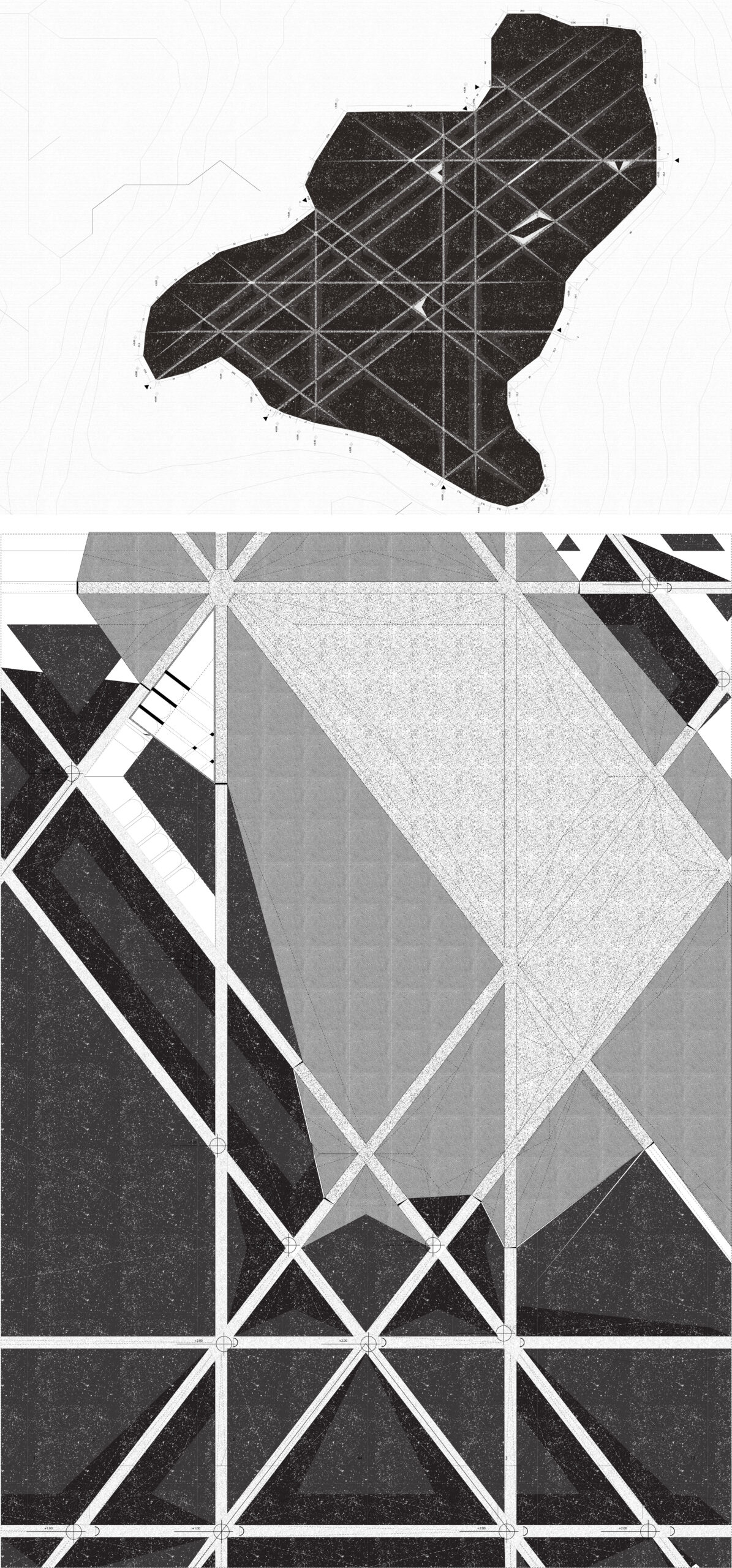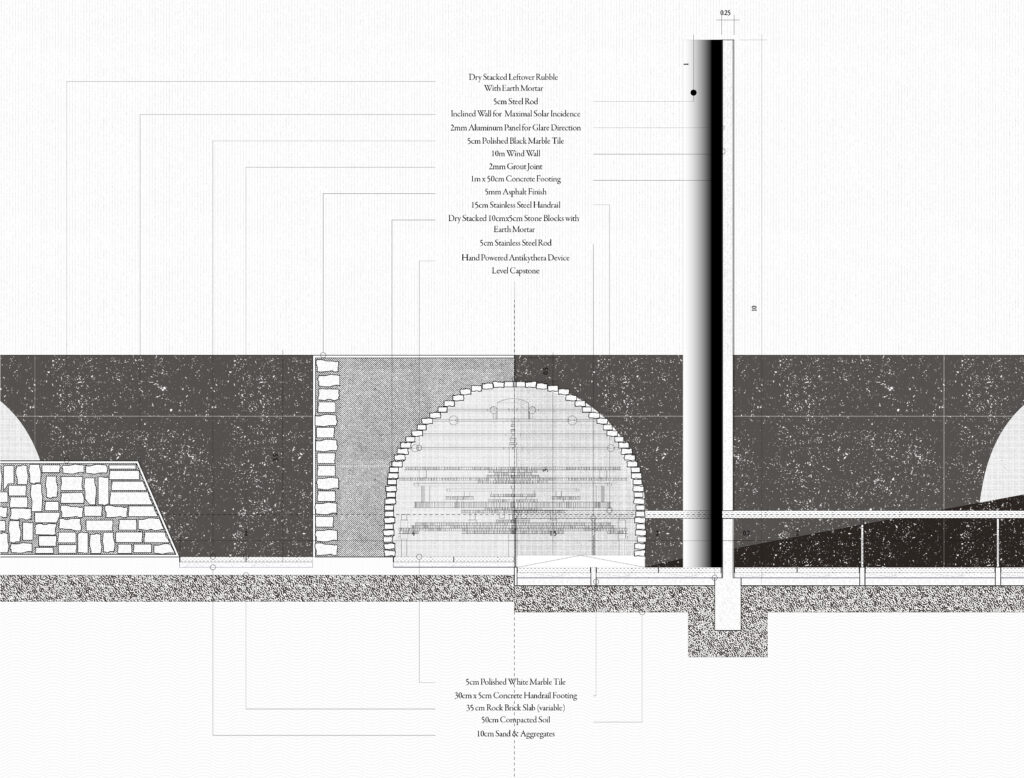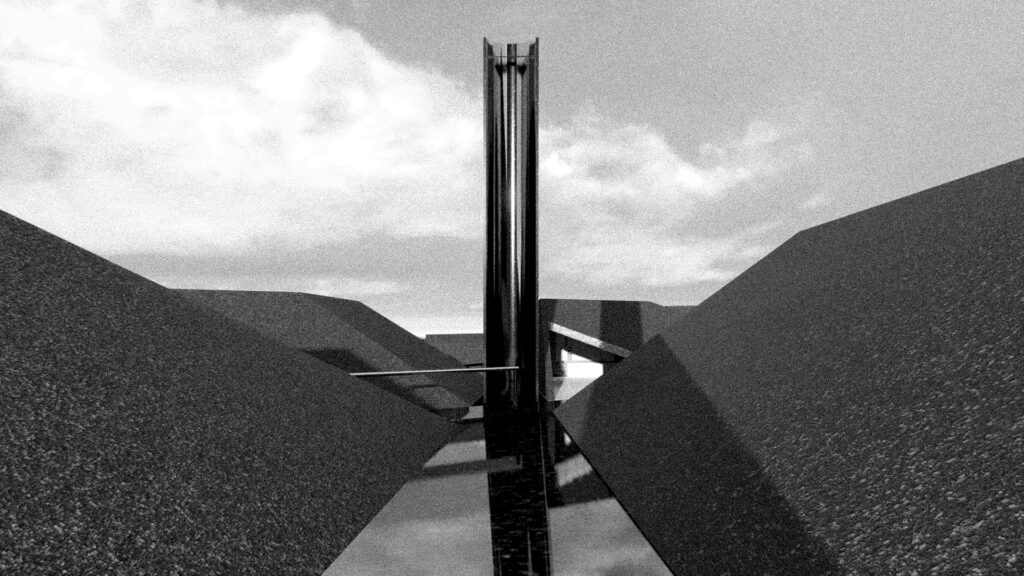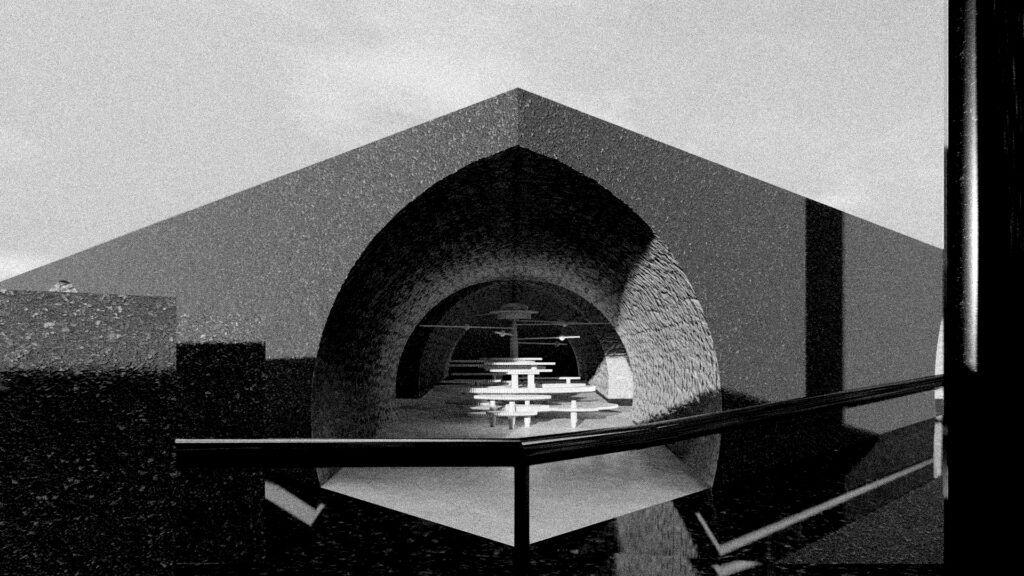CRYPT: ACCEPTANCE / FACING DEATH
The fifth architectural intervention represents the stage of acceptance, embodying the journey towards embracing the inevitability of death. Situated on a hill destined for imminent demolition, a maze constructed from 3-meter-high dry-stacked rocks, remnants of the coal mine, stands as a testament to the territory of grief.
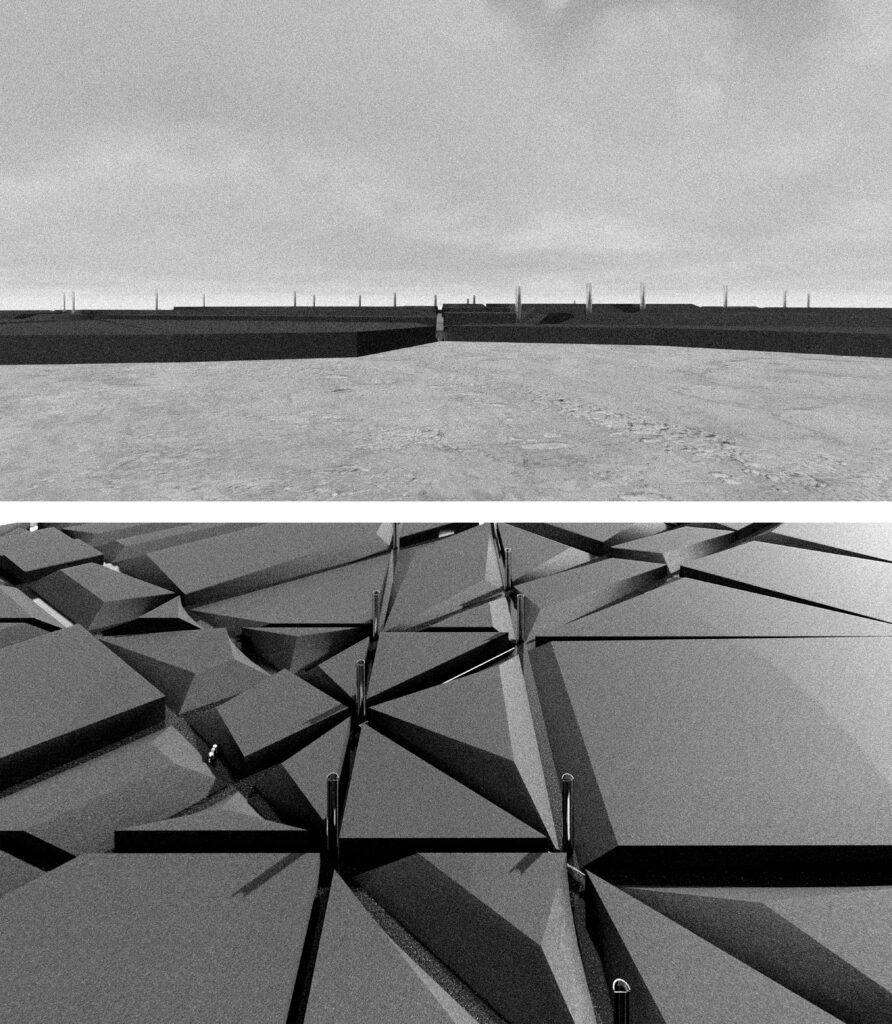
As visitors approach the site, they encounter a labyrinthine structure, crafted from leftover rocks extracted from the mine. The dry-stacked arrangement is a deliberate reflection vis-à-vis the haphazard nature of grief, taking inspiration from existing water networks around the site.
The overall intervention’s master plan attempts to deter potential destroyers or unwelcome visitors by creating an atmosphere of maximum discomfort. Various elements within the maze contribute to this disconcerting ambiance. Walls coated in asphalt create a sense of foreboding, an unsettling reminder of the destructive forces that loom nearby, absorbing maximal solar incidence with their slanted edges.
Reflective wind towers, strategically positioned, not only block summer breezes but also cast blinding rays of sunlight into visitors’ eyes, intensifying the sense of discomfort and unease. Adding to the unsettling environment, slippery marble floors underfoot further disrupt visitors’ sense of stability. The deliberate inclusion of these discomforting features seeks to create an experience that encourages contemplation and introspection, reflecting the challenging path towards acceptance in the face of impending destruction.
Within the labyrinth, 78 stacked blocks dominate the landscape. Among them, five vaulted blocks serve as custodians of human knowledge and belonging, safeguarding indications of our civilization. These vaults, hidden within the maze, carry the weight of collective memory, ensuring that the territory encodes not only the grief experienced by those who navigate the labyrinth but also the heritage and wisdom of humanity itself.
The architectural intervention’s symbolism lies in its capacity to encode the territory of grief by anticipating its destruction. The maze becomes a microcosm of the human experience, reflecting the acceptance of the impermanence of existence. Each turn within the labyrinth mirrors the winding journey of grief, while the discomforting elements emphasize the resilience necessary to embrace acceptance.
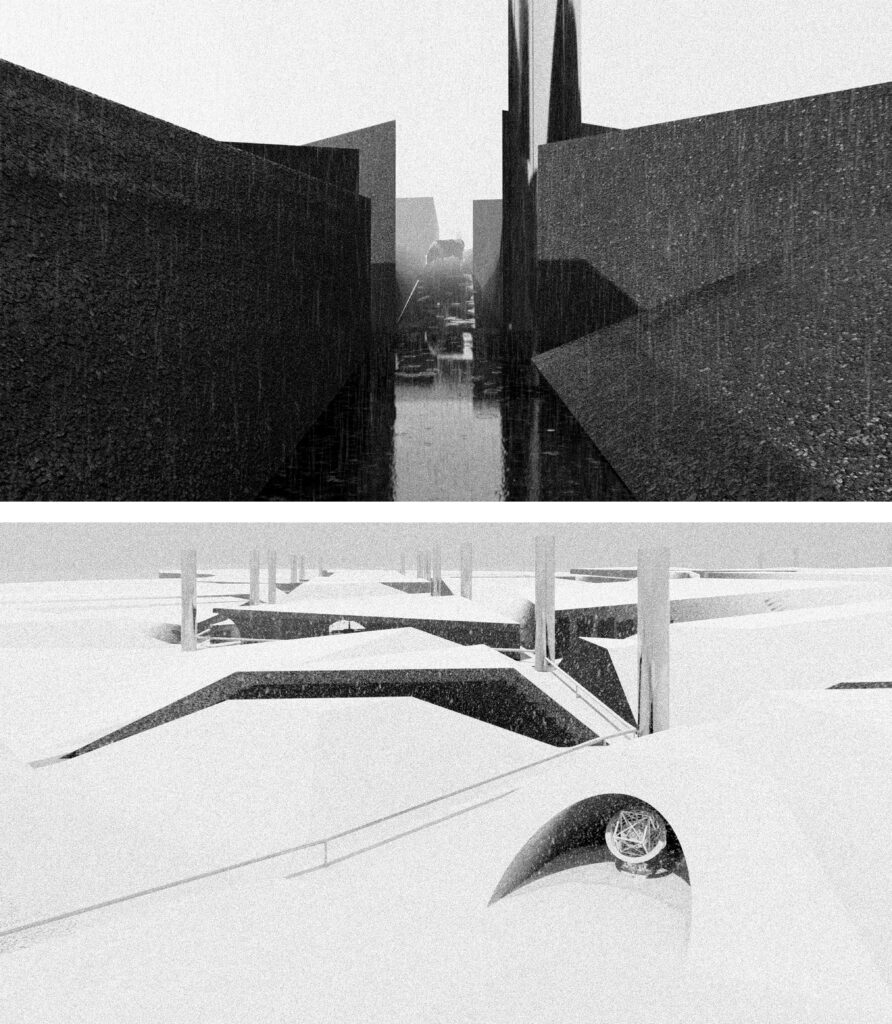
By confronting the impending destruction head-on, the intervention invites visitors to grapple with their own mortality and accept the transience of human existence. The stacked rocks, remnants of the coalmine’s past, become a metaphor for the fragility of life and the impermanence of humanity. Through the deliberate creation of a challenging and uncomfortable environment, the intervention underscores the importance of acceptance in the face of inevitable destruction.
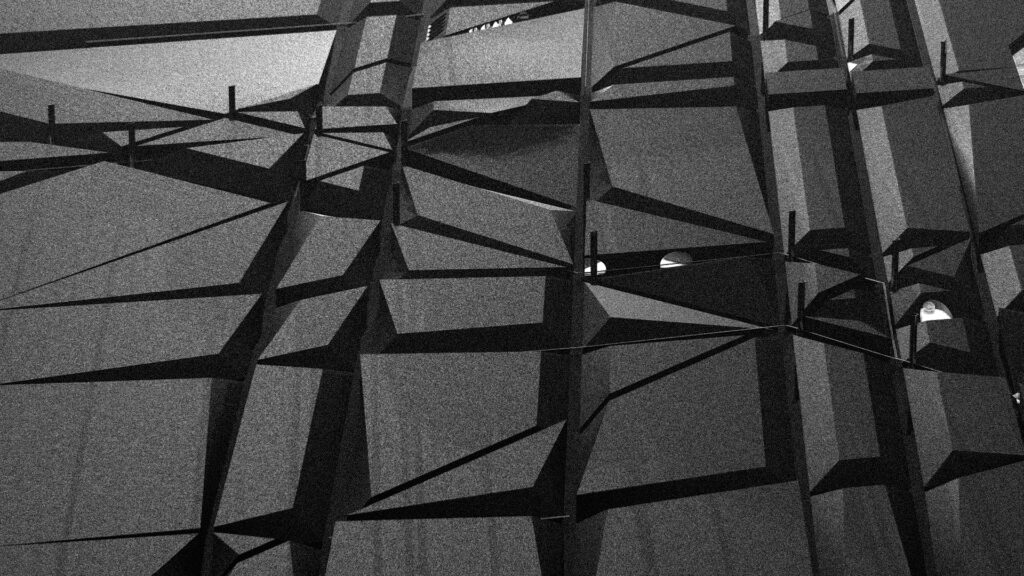
The intervention invites visitors to question their belonging in this space, to navigate this labyrinth of resilience, to confront their own mortality, and to contemplate the fleeting nature of life. It is within this unsettling environment that visitors are invited to unearth the encoded territory of grief and embracing acceptance in the face of impending death. As visitors navigate the maze’s intricate pathways, they become active participants in a dialogue with mortality and the cyclical nature of existence. The intervention serves as a reminder that life is but a circle, insisting on the need to embrace and accept its ephemerality.

